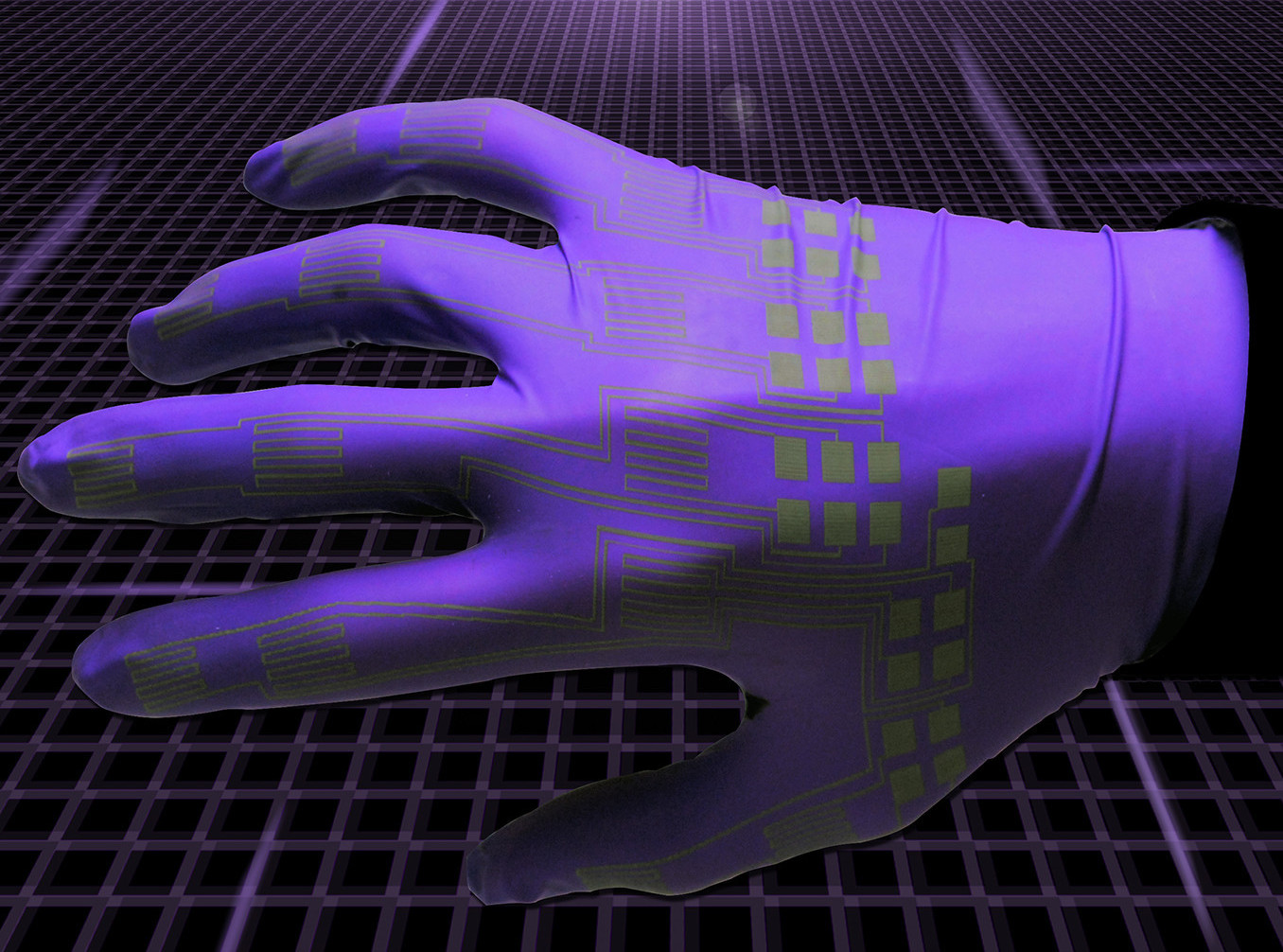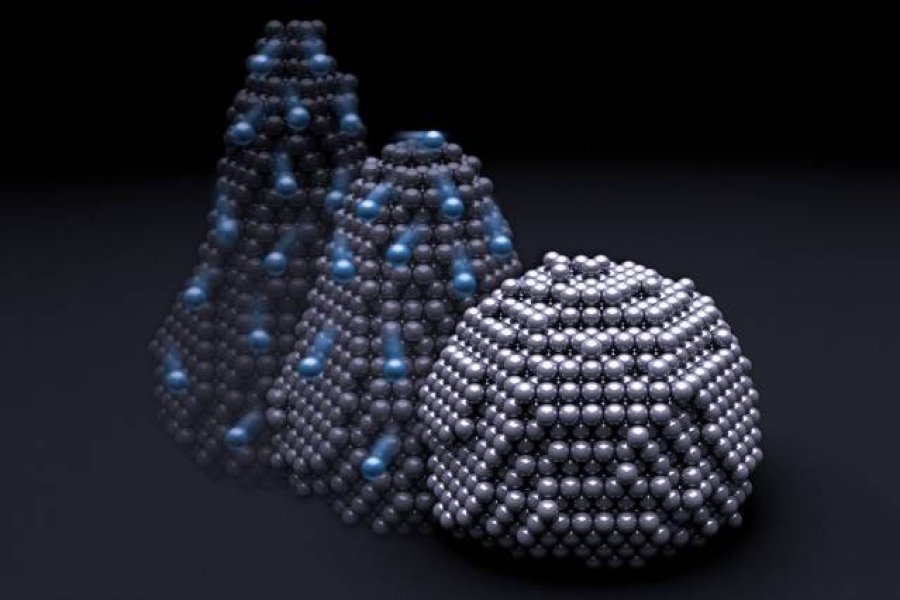Inkjet printing of flexible electronics for body-worn medical devices
New research shows how inkjet-printing technology can be used to mass-produce electronic circuits made of liquid-metal alloys for “soft robots” and flexible electronics.

Elastic technologies could make possible a new class of pliable robots and stretchable garments that people might wear to interact with computers or for therapeutic purposes. However, new manufacturing techniques must be developed before soft machines become commercially feasible, said Rebecca Kramer, an assistant professor of mechanical engineering at Purdue University.Alex Bottiglio, Purdue University Photo.
by Editors, MedGadget Apr 10, 2015
Flexible electronics have the potential to revolutionize medicine, and they’ve already shown a lot of promise though the technology is still in an early development. In order to bring it to the next stage, easy and cheap methods for printing flexible electronic circuits are a necessity.
Researchers at Purdue University have developed a new inkjet printing technique that can print elastic and stretchable wires onto different kinds of materials at a low cost and at high speed.

A surprising phenomenon has been found in metal nanoparticles: They appear, from the outside, to be liquid droplets, wobbling and readily changing shape, while their interiors retain a perfectly stable crystal configuration. Yan Liang, Science Daily.
From the study abstract in Advanced Materials, Liquid metal nanoparticles that are mechanically sintered at and below room temperature are introduced. This material can be sintered globally on large areas of entire deposits or locally to create liquid traces within deposits. The metallic nanoparticles are fabricated by dispersing a liquid metal in a carrier solvent via sonication. The resulting dispersion is compatible with inkjet printing, a process not applicable to the bulk liquid metal in air.
 Source Purdue University via MedGadget
Source Purdue University via MedGadget
| References |
Mechanically sintered gallium-indium nanoparticles, Boley JW, White EL, Kramer RK. Adv Mater. 2015 Apr 8;27(14):2355-60. doi: 10.1002/adma.201404790. Epub 2015 Feb 27.
Laser Sintering of Liquid Metal Nanoparticles for Scalable Manufacturing of Soft and Flexible Electronics, Liu S, Yuen MC, White EL, Boley JW, Deng B, Cheng GJ, Kramer-Bottiglio R. ACS Appl Mater Interfaces. 2018 Aug 22;10(33):28232-28241. doi: 10.1021/acsami.8b08722. Epub 2018 Aug 9.
Also see
Nanoparticles can act like liquid on the outside, crystal on the inside, Science Daily
